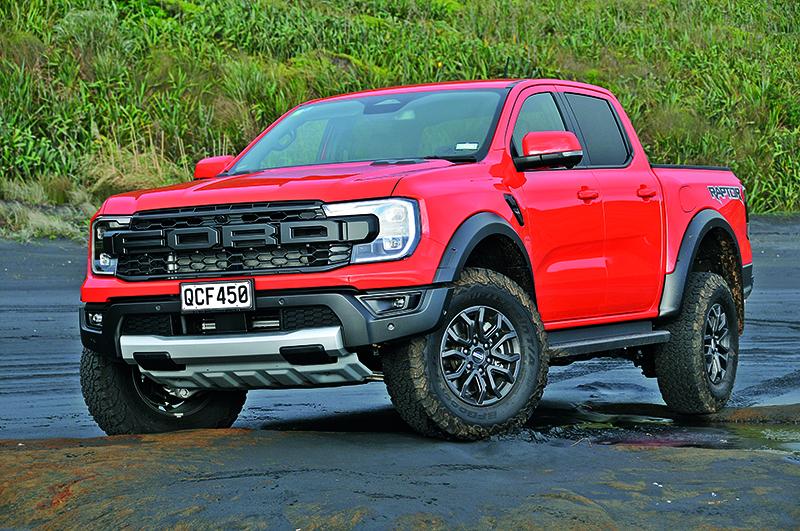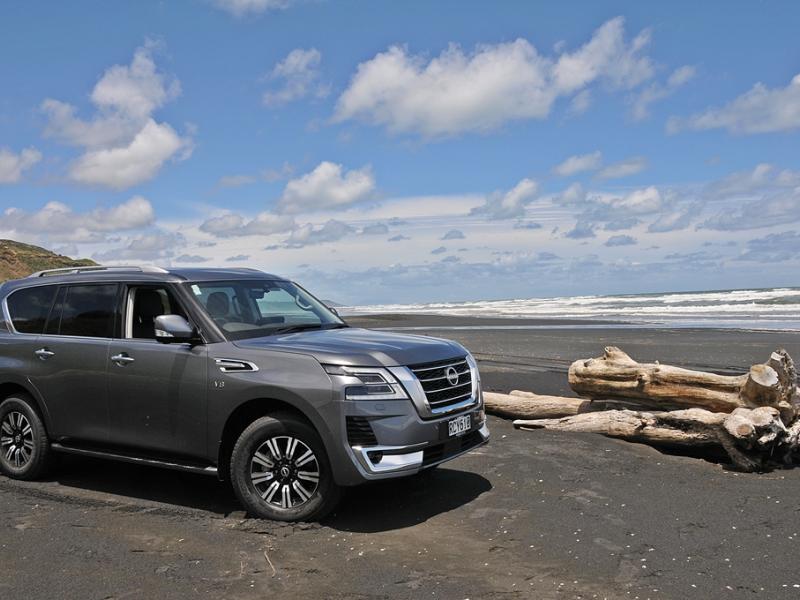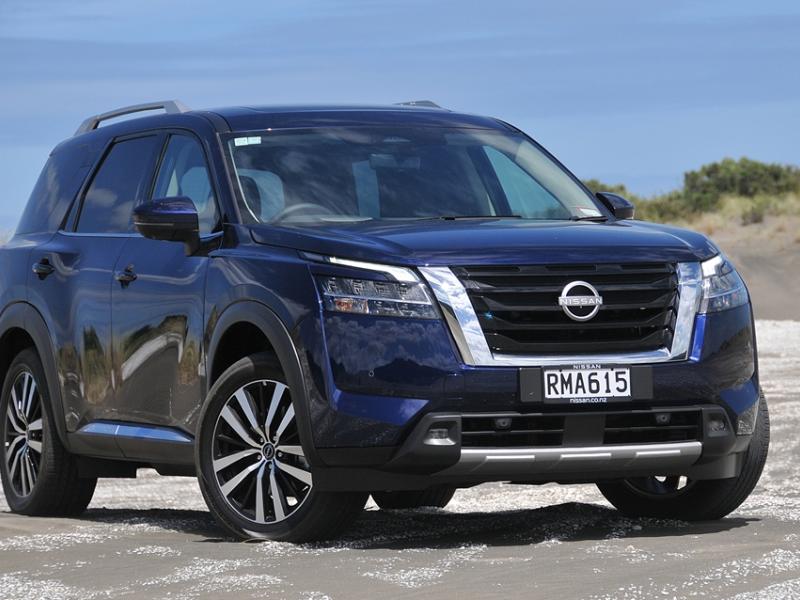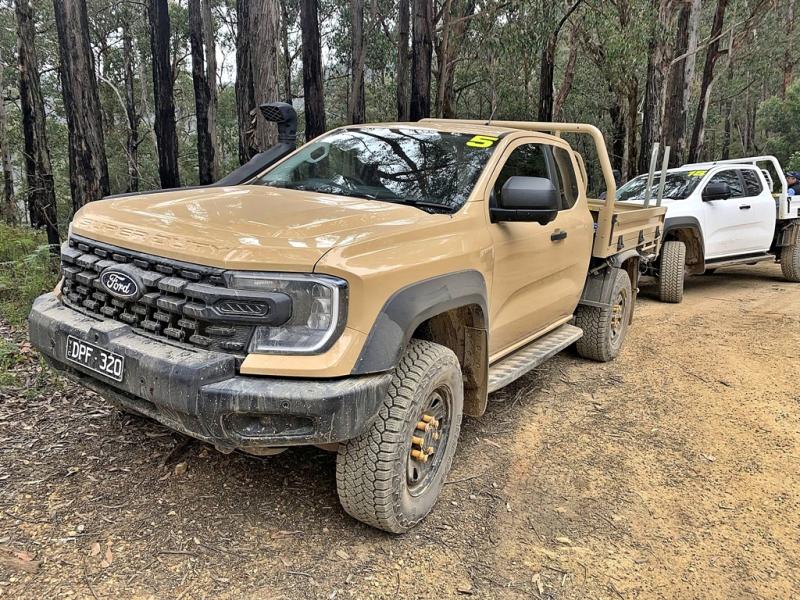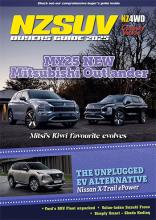Unique is a word that gets used a lot, and often it’s advertising babble or marketing spiel. In this case, though, it’s entirely justified. Ford’s ‘version 2.0’ Raptor has no rival or equal.
A 3.0-litre twin turbo, petrol V6 engine coupled to that ten-speed auto and clever transfer case with 4-A option and an encyclopaedia of management options including ‘Baja’.
A full 292kW of power – in this case, power is at least as important as torque.
The second biggest torque number – 583Nm – in the whole Ford New Zealand product line.
And that loud and proud exhaust tone, evident from the first time the start button is prodded.
A 0-100 time of 6.0 seconds.
Sublime.
This is a truck that criues out for off-road adventuring. Every time we read about electric this or PHEV that, it’s cool to remember that this thing is out there, selling like hot cakes. In fact, the only thing limiting sales is availability.
With the ute tax now a gone thing, the Raptor is more affordable. If those wait times would only shorten up.
Kiwi media reckon everything about the Raptor is mad. “The look, the dynamics, the specification provision… the fact it even exists.”
Despite the outgoing Government’s efforts to slow demand for utes, Kiwis continue to desire – and buy – the vehicles that suit our lifestyles. Raptor is simply ‘more ute’ and demand is strong.
Taller and broader than its stablemates, the ‘version 2.0’ Raptor is simply a masterpiece of design and engineering.
It is more capable off road than its rivals and stablemates. For that capability, it does have reduced cargo and towing capacity than a regular Ranger. One look underneath the truck shows why: unique shock/spring assemblies, beefed up suspension units, a serious upgrade all of which is aimed directly at off-road driving.
Cargo carrying is limited to 708kg rather than a tonne. Towing capacity is 2500kg, rather than 3500kg on the bulk of the Ranger line-up.
Those who tow or carry gear frequently might look to a Sport or a Wildtrak V6.
The rest of the 4WD world will continue to desire Raptor.
Simply, because it is specialised for off-road adventure, Raptor can do more and be more than its rivals.
The Fox suspension – branded FoMoCo in some areas – transforms Raptor into a superb off-roader and endows it with supple on-road manners as well.
The rest of the Ranger family is well sorted. Raptor is simply better.
It travels on BF Goodrich all-terrain tyres, the latest version of one of the original A/T products. NZ4WD has experience of all-terrains dating back to last century, and they are the tyre by which all other A/T treads are measured.
An all-terrain used on the road is grippy enough and when it does slide, it does so progressively, which flatters the driver with slight and easily managed oversteer. The engineering that has gone into the Raptor means the slip and slide is communicated to the driver early, and is easily tamed.
Is economy something Raptor owners focus on? Perhaps it is. These days, it’s front of mind for all motorists. When NZ4WD picked up the Raptor, it was showing 21l/100km. Gassssp.
Somebody had been having fun with the throttle. In the following week, we got it down to 16l/100km, then 14.2l/km. Official claimed economy is 11.5l/100km. Getting to 12 would be achievable, but that extra step would require some driving without air conditioning and a very light accelerator foot. Aussie media claim they hit the official figure without trouble.
Those trading up from Raptor 1.0 are in for the ride of their lives. The earlier version introduced the bi-turbo four-cylinder diesel now seen across the range, but apart from turbo count (two), there’s no comparison between the four-cylinder diesel of the original introduced in 2018 and the new petrol V6.
The biturbo four-cylinder diesel is good, but seemed underwhelming in the Raptor.
From the protective door steps to everything else, the Ford Performance aura is pronounced.
The next-Gen Rangers are longer in the wheelbase and wider in the track than the ones they superseded; the Raptor is even wider. That adds an aggressive edge to its stance, and further boosts stability and handling. It also takes the turning circle out to 13m.
In terms of driving dynamics, a bit of thought choosing transmission mode helps too. In 2-hi, Raptor is occasionally edgy, calling for careful use of the throttle on wet roundabouts or clay-based back roads. That mountain of torque gets a bit lively.
Tap the 4-A button, and the driving settles right down. runs all-paw, with electronics determining how much torque goes to each axle. Once again, 4-A is the favourite until full-on offroading is in view. Then we step down to 4-hi or 4-lo and might tap Baja mode for fun. Raptor’s normal/slippery/sport modes echo those of other Rangers.
The original Raptor was Ranger’s standard-setter for on-road comfort and off-road ability. Version 2.0 builds on that, and 4-A means it is properly all-wheel-drive in all conditions. For most driving, 4-A is the choice and we’d run it as our default.
The trick Baja mode is for off-road use, but of course not limited to dust or sand.
Locking differentials front and rear complement the clever driving modes to suit every situation.
Fox’s live valve motorsport dampers apply offroad racing technology to recreational off-road fun. They respond to throttle and steering inputs along with the bumps and humps of the terrain. The unique rear end – four-link trailing arm and coil springs – is plush and smooth after the leaf springs of the more utilitarian vehicles in this market segment.
The truck has 272mm ground clearance. Its approach/ramp-over/departure angles are 34/27/24 degrees, the approach number thanks in part to a Raptor-specific front end with bash plate. Wading depth is 850mm.
This is a 2.4 tonne 4WD that simply never feels anything but responsive, ‘alive’ even.
Standard safety equipment includes dual front, side chest-protecting and side head-protecting (curtain) airbags, driver and passenger knee airbags, and a centre airbag that provides head-clash protection to front seat occupants in a side-impact crash.
Crash-avoidance technology includes autonomous emergency braking (vehicle-to-vehicle, pedestrian and cyclist detection, and junction assistance), lane-keeping assistance, speed sign recognition, blind-spot warning, rear cross-traffic alert and reversing AEB.
The Raptor also has active cruise control, front and rear parking sensors, a 360-degree camera view, tyre pressure monitors and matrix LED headlights.
In the cabin, the Raptor has ‘Code Orange’ trim highlights including contrast stitching on the seats and elsewhere, a rally-style strip of leather at the top-dead centre of the steering wheel.
Front seats are motorsport-influenced, with excellent hairs are bolstered sports types and trimmed in faux suede leather, with Raptor inscriptions.
In the rear seat, headroom and legroom are good. The seat is sculpted into two semi-bucked areas with a centre pillow, making the truck an ‘occasional’ five-seater.
Raptor gets a 12-inch ‘portrait’ format touchscreen. Apple CarPlay and Android Auto are standard and run through a B&O sound system.
There’s a smartphone charger, four USB-A and USB-C ports in the front and rear consoles (one of each front and rear), a USB-A socket in the mirror housing for a dash cam, and a 12V socket in the centre console.
In summary? Raptor now delivers the performance it always promised. Its ability in all conditions is massive, and it flatters mortal drivers in rough going and low-grip situations. It’s not a truck for shy and retiring types, but it’s almost impossible to hold back a smile when that smooth turbo V6 sings its song.
Highlights:
• Powerful and responsive petrol engine.
• Rough road comfort over bumps.
• Vast bandwidth of on-road and off-road ability.
• Ddrive modes to suit every occasion.
• That exhaust note.

